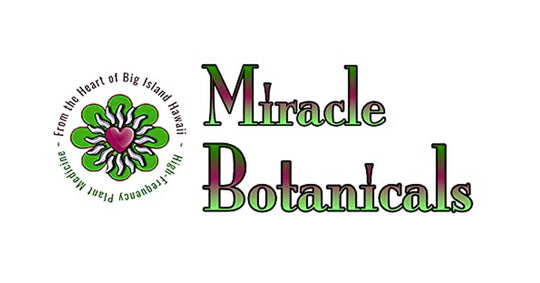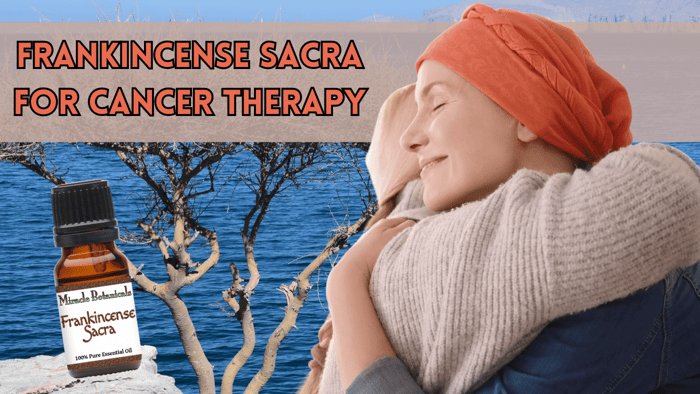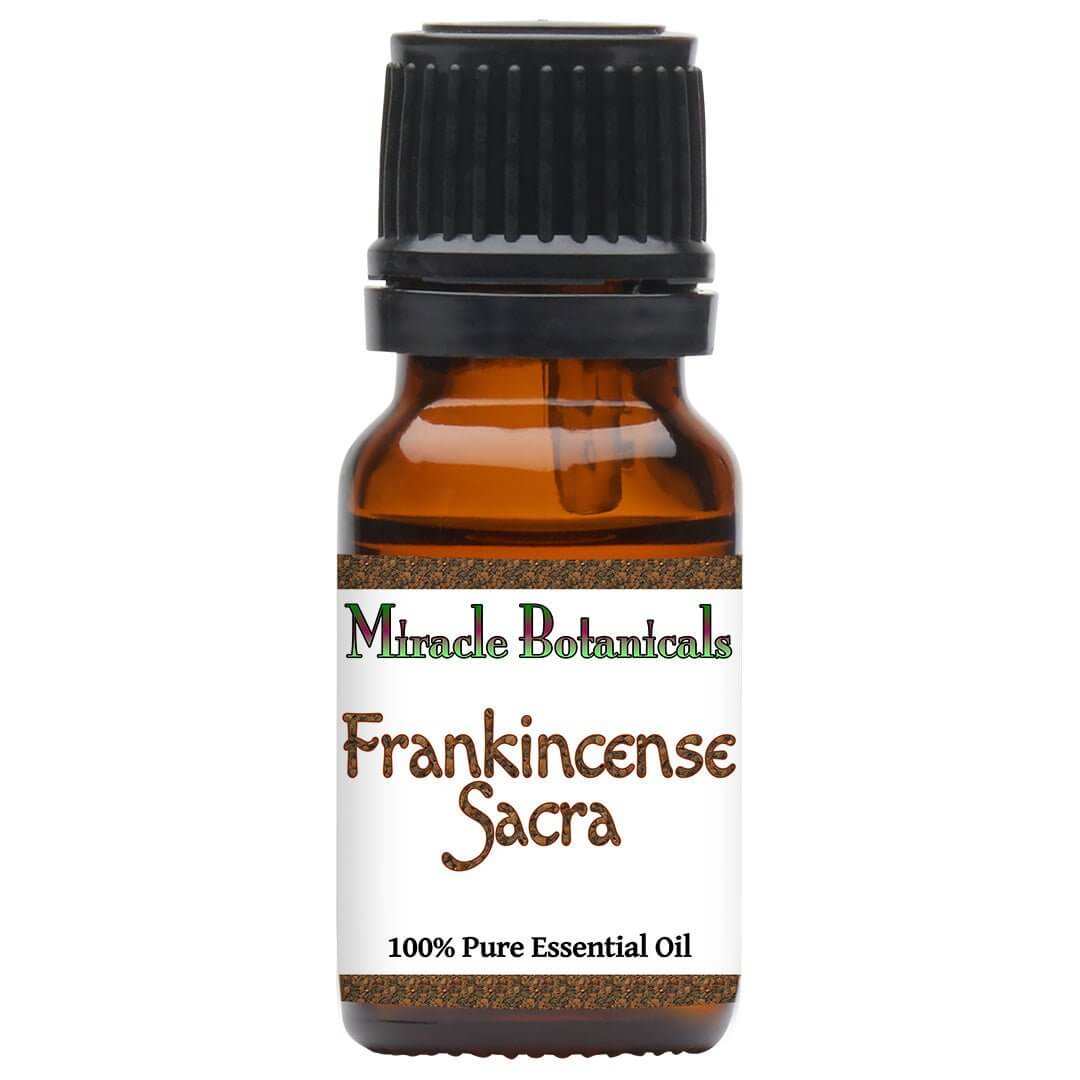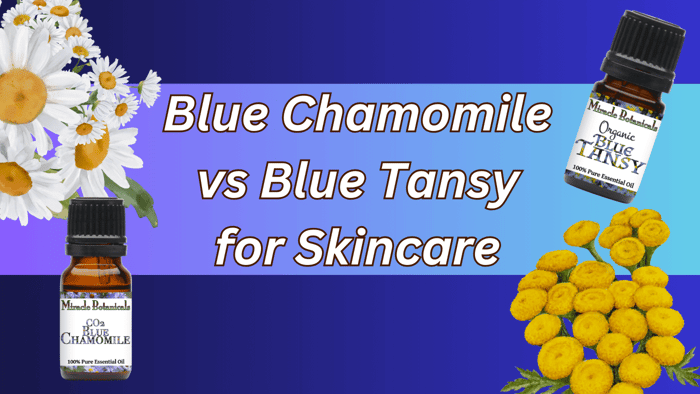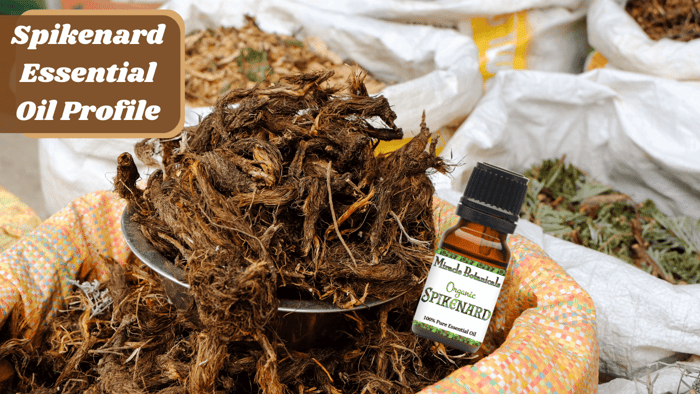Table of Contents
- Miracle Botanicals Frankincense Sacra Essential Oil
- The Scientific Basis of Frankincense in Cancer Therapy
- Potential Applications of Frankincense in Cancer Treatment
- Challenges and Considerations Regarding Frankincense and Cancer Therapy
- Comparative Analysis with Conventional Cancer Treatments
- Conclusion
- FAQs
- References
Frankincense Sacra, sourced from the resin of the Boswellia tree, has been an integral part of traditional medicine for centuries, celebrated for its anti-inflammatory properties and aromatic allure [1][2]. Recognized under the moniker "franc encens" or pure incense, this venerable sap has been harvested and utilized in rituals, as a symbol of luxury, and for its therapeutic qualities, dating back to the civilizations of ancient Egypt and beyond [3]. Given its historical significance and purported health benefits, many today are exploring what frankincense is good for, especially in the realm of cancer therapy.
Recent investigations have reignited interest in traditional medicine and natural remedies like frankincense, particularly their application in cancer treatment. Research suggests that compounds found in frankincense, such as boswellic acid and terpenes, may possess the ability to inhibit tumor growth and support the immune system [1][3][4]. However, as we delve into the potential uses of frankincense in cancer care, it's crucial to consider both the promises it holds and the challenges it faces, including understanding the significance of terpenes, breast cancer applications, and being mindful of frankincense side effects [4][5][6].
Miracle Botanicals Frankincense Sacra Essential Oil
Handcrafted with care, Miracle Botanicals’ Omani Frankincense Sacra Essential Oil is a testament to the enduring legacy of this revered resin. Collected from the Boswellia sacra trees that thrive in Oman's arid climate, each drop of this precious oil embodies the essence of purity and potency.
Miracle Botanicals is committed to sustainability and ethical sourcing practices, ensuring that our Omani Frankincense Sacra Essential Oil is harvested in harmony with the environment and in accordance with traditional methods. By supporting local communities and preserving ancient traditions, we strive to share the timeless gift of Omani frankincense with the world.
Unlock the secrets of this ancient remedy and discover the power of nature's bounty in promoting health and vitality.
The Scientific Basis of Frankincense in Cancer Therapy
Exploring frankincense and cancer to discover the Anti-Cancer Potential of Frankincense:
- Anti-Inflammatory and Direct Attack on Cancer Cells:
- Specific Impacts on Cancer Types:
- Breast Cancer: Studies have shown that frankincense has anticancer impacts on breast cancer stem-like cells (CSLCs), with significant cytotoxic and apoptotic effects, although these cells are more resistant than other breast cancer cells [8].
- Melanoma: Frankincense essential oil (FEO) induces a dose-dependent reduction in cell viability in both mouse and human melanoma cells without affecting normal human epithelial melanocytes. This suggests a targeted approach to cancer therapy [9].
- Mechanisms of Action:
- Frankincense essential oil has been observed to downregulate Bcl-2 and upregulate BAX in melanoma cells, promoting apoptosis. Additionally, in certain melanoma cells, FEO induces cleavage of caspase 3, caspase 9, and PARP, further indicating its potential in cancer treatment [9].
- In a melanoma mouse model, FEO treatments significantly reduced tumor burden, showcasing the therapeutic potential of frankincense in cancer care [9].
- Clinical Trials and Patient Outcomes:
- A Phase Ia window of opportunity trial revealed that patients with invasive breast cancer treated pre-operatively with B. Serrata experienced a reduction in proliferation between core biopsy and excision, indicating a significant difference between the control and treated groups [14].
- No serious adverse events related to Boswellia serrata were reported, underscoring its tolerability in patients [14].
These findings, while promising, underscore the necessity for larger, more comprehensive studies around frankincense and cancer to fully understand the scope of frankincense's efficacy in cancer therapy and its potential integration into conventional treatment protocols [1][2][8][9][10][14].
Frankincense Sacra Essential Oil (Boswellia Sacra)
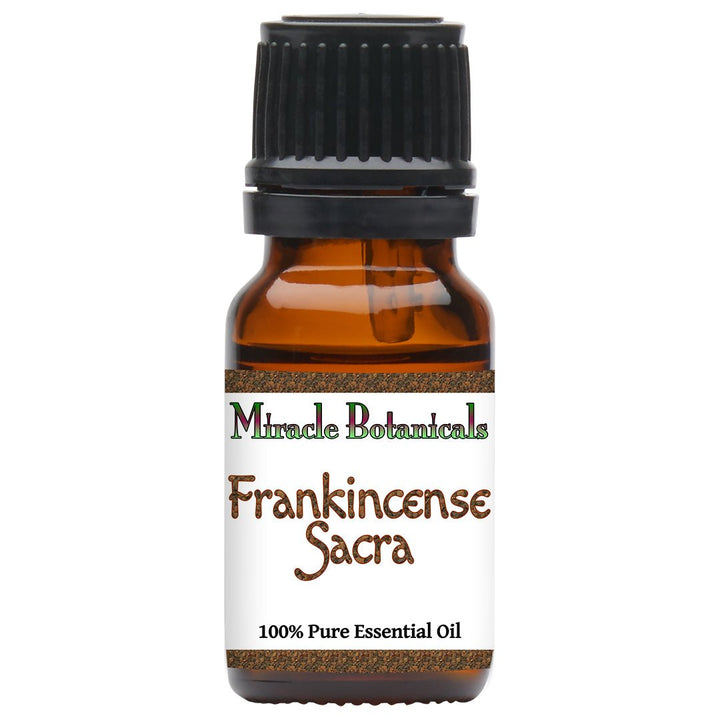
$19.97
Botanical Name: Boswellia Sacra Common Name: Green Hojari Frankincense Plant Part: Resin Method of Extraction: Hydrodistilled Country of Origin: Oman Oil Color/Consistency: Clear with Yellow Tinge and Thin Consistency Aroma: Sweet, Light, Warm, Resinous Perfumery Note: Base Main Chemical Components:… read more
Potential Applications of Frankincense in Cancer Treatment
Exploring the Multifaceted Applications of Frankincense and Cancer Treatment:
- Supplementary Use and Symptom Management:
- While conventional wisdom holds that frankincense should not replace conventional cancer treatments, it can serve as a supplementary aid alongside medical treatment to alleviate chemotherapy symptoms [1].
- Aromatherapy with frankincense can provide relief from pain, sleep disturbances, anxiety, stress, and possibly nausea and vomiting for individuals undergoing cancer treatment [15].
- The application method varies; it can be used topically or through diffusion, making it a versatile option for symptom management [15].
- Clinical Trial Insights on frankincense and cancer:
- The 'window of opportunity' clinical trials assess the impact of frankincense on the biology of tumors by comparing pre-treatment biopsy samples with those taken post-treatment, offering a direct insight into its effects on tumor biology [11].
- These trials focus on the time between cancer diagnosis and surgical intervention, providing a unique opportunity to study frankincense's potential benefits [11].
- Safety and Consultation:
- It's imperative to discuss the use of frankincense with healthcare professionals to understand potential side effects and individual risks, ensuring a safe and informed approach to its application in cancer treatment [15].
- The research focuses on the resin gum rather than the essential oil, highlighting the importance of understanding the specific form and composition of frankincense being studied for its anti-cancer properties [1].
By integrating traditional wisdom with modern scientific inquiry, the potential applications of frankincense in cancer treatment offer a complementary approach to conventional therapies, emphasizing the importance of patient safety, informed decision-making, and holistic well-being [1][11][15].
Challenges and Considerations Regarding Frankincense and Cancer Therapy
While exploring the potential of frankincense and cancer therapy, it's crucial to navigate through several challenges and considerations:
- Lack of Clinical Research:
- According to Robert Tisserand, there's an absence of clinical research supporting the use of frankincense essential oil specifically for cancer treatment [13]. This highlights a significant gap in evidence-based practice, underscoring the necessity for robust clinical trials to validate its efficacy [1].
- According to Robert Tisserand, there's an absence of clinical research supporting the use of frankincense essential oil specifically for cancer treatment [13]. This highlights a significant gap in evidence-based practice, underscoring the necessity for robust clinical trials to validate its efficacy [1].
- Regulatory and Safety Considerations:
- Frankincense is not recognized as a drug by the FDA, which means its production is not regulated for quality or safety. This lack of oversight can lead to variability in product quality and potential safety concerns [1].
- Conventional wisdom says that essential oils, including frankincense, should never be ingested and must always be diluted with a carrier oil before topical application to avoid adverse reactions [1][2]. While I prefer other methods, there may be instances where ingestion is suitable. My husband and I slather frankincense all over ourselves every day. We love it as a deodorant and haven't had any adverse effects in 14 years of usage.
- Consultation and Contraindications:
- It's imperative for individuals to consult healthcare professionals and/or qualified aromatherapists before incorporating frankincense into their cancer treatment regimen. This ensures a personalized and safe approach, especially considering potential drug interactions and side effects like stomach pain, nausea, and diarrhea [1].
- Special populations, such as pregnant or lactating individuals, those with a history of allergic reactions, or those with weakened immune systems, should exercise caution or avoid using frankincense extract or essential oils altogether [1].
These considerations highlight the importance of informed decision-making to navigate the complexities of integrating frankincense into cancer therapy responsibly.
Comparative Analysis with Conventional Cancer Treatments
In the innovative realm of frankincense and cancer therapy, the integration of frankincense through clinical trials offers a fascinating bridge between traditional and modern treatment modalities. Dr. Nancy DeMore's leadership in conducting a clinical trial at MUSC underscores the potential of frankincense in treating breast and colon cancer, providing a unique comparative insight against conventional cancer treatments [11].
- Clinical Trial Framework:
- Comparative Aspects with Conventional Treatments:
- Innovative Approach: Unlike traditional therapies that often involve chemotherapy, radiation, or surgery, this trial explores the biological changes induced by a natural compound [11].
- Patient-Centric Focus: Aimed at understanding the direct influence of frankincense on tumor biology, providing a less invasive option for observation before proceeding with conventional treatment methods [11].
This exploration not only highlights the potential of frankincense in altering the course of cancer treatment but also emphasizes the importance of integrating natural remedies with scientific research to enhance therapeutic outcomes.
Frankincense Sacra Essential Oil (Boswellia Sacra)

$19.97
Botanical Name: Boswellia Sacra Common Name: Green Hojari Frankincense Plant Part: Resin Method of Extraction: Hydrodistilled Country of Origin: Oman Oil Color/Consistency: Clear with Yellow Tinge and Thin Consistency Aroma: Sweet, Light, Warm, Resinous Perfumery Note: Base Main Chemical Components:… read more
Conclusion
In the heart of the journey through understanding frankincense's role in cancer therapy, we've navigated through its ancient legacy and promising scientific insights, highlighting its potential as both a complementary and a pioneering avenue in cancer care. The discussions on its historical usage, particularly within Oman's rich cultural tapestry, reverberate with the importance of integrating traditional wisdom alongside modern medical practices. This fusion not only underscores the necessity of further research and comprehensive clinical trials to delineate frankincense's efficacy but also illuminates a path toward holistic, patient-centric cancer therapy.
As we contemplate the broader implications of frankincense's potential in cancer treatment, it's crucial to remain guided by evidence-based practices while maintaining an openness to exploring the wealth of traditional remedies that have supported human health for centuries. The integration of frankincense and cancer therapy, mirroring the practices seen in Omani hospitals, invites a nuanced consideration of how ancient remedies can intersect with contemporary therapy to provide relief and hope to those on their cancer journey. For those intrigued by the therapeutic possibilities of this ancient remedy, you can buy frankincense sacra essential oil, embracing a step toward exploring its holistic benefits within the spectrum of modern cancer care.
FAQs
How to Apply Frankincense Oil for Skin Care
Q: What is the recommended method for applying frankincense oil to the skin?
A: For an effective skin care routine, mix one part frankincense oil with 10 parts carrier oil. This blend can be applied to areas like under the eyes to reduce bags or on the hands to soothe chapped skin. Frankincense oil, along with other essential oils, is known to reduce wrinkles and signs of aging.
The Benefits of Frankincense
Q: What are the health benefits associated with frankincense?
A: Frankincense, also known as olibanum, is a popular essential oil in aromatherapy known for its wide range of health benefits. It can help alleviate chronic stress and anxiety, reduce pain and inflammation, and enhance immune system function.
Using Frankincense for Brain and Nervous System Health
Q: Why should frankincense oil be placed under the tongue?
A: Placing a drop of Miracle Botanicals frankincense essential oil under the tongue is favored for its support of brain and nervous system health. This method is a preferred way to utilize frankincense daily for its neurological benefits.
References
[1] - https://www.medicalnewstoday.com/articles/314366
[2] - https://www.healthline.com/health/cancer/frankincense-and-cancer
[3] - https://www.laphamsquarterly.org/roundtable/brief-history-frankincense
[4] - https://www.thoughtco.com/frankincense-history-ancient-aromatic-tree-resin-170908
[5] - https://www.quora.com/What-is-frankincense-and-why-was-it-so-important-in-the-ancient-world
[6] - https://www.quora.com/How-do-people-use-frankincense-today-as-opposed-to-2500-years-ago
[7] - https://www.linkedin.com/pulse/role-frankincense-history-culture-from-ancient-times-modern-dahir
[8] - https://www.ncbi.nlm.nih.gov/pmc/articles/PMC9939999/
[9] - https://www.ncbi.nlm.nih.gov/pmc/articles/PMC6544398/
[10] - https://hollingscancercenter.musc.edu/news/archive/2024/01/11/hollings-researchers-boswellia-frankincense-shows-anti-cancer-activity-in-small-trial
[11] - https://research.musc.edu/stories/news/2017/10/06/frankincense-tested-as-possible-breast-and-colon-cancer-treatment
[12] - https://www.frontiersin.org/journals/pharmacology/articles/10.3389/fphar.2022.1020602/full
[13] - https://tisserandinstitute.org/frankincense-oil-and-cancer-in-perspective/
[14] - https://link.springer.com/article/10.1007/s10549-023-07215-4
[15] - https://www.cancer.net/blog/2021-07/can-using-essential-oils-help-treat-cancer-and-its-side-effects
$19.97
Botanical Name: Boswellia Sacra Common Name: Green Hojari Frankincense Plant Part: Resin Method of Extraction: Hydrodistilled Country of Origin: Oman Oil Color/Consistency: Clear with Yellow Tinge and Thin Consistency Aroma: Sweet, Light, Warm, Resinous Perfumery Note: Base Main Chemical Components:… read moreFrankincense Sacra Essential Oil (Boswellia Sacra)

